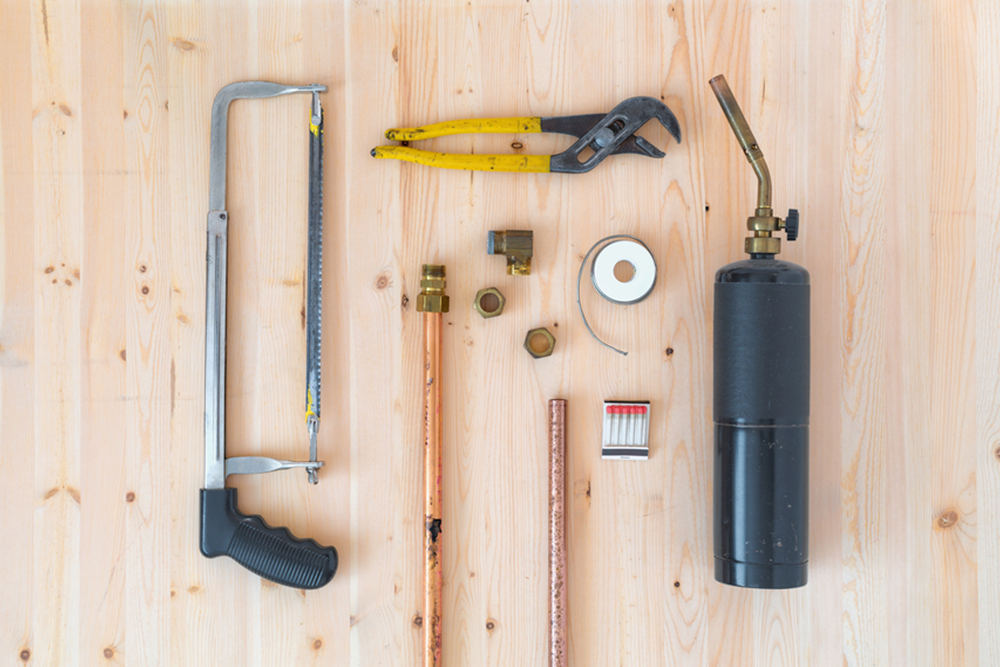What do Cary Grant, Tom Hanks, and Richard Pryor have in common? They all starred in hilarious movies with plots built around their money-pit homes (1948’s Mr. Blandings Builds His Dream House, 1986’s The Money Pit, and 1989’s Moving respectively). But there’s nothing comedic about buying a home for sale in Sioux Falls, SD, that turns out to need much more extensive (and expensive) home repairs than you originally thought. In real life, buying a money pit can nearly drive a new homeowner to lose their mind — and the shirt off their back.
Fortunately, there are a number of real-life strategies that buyers can act on to prevent their own home-buying plotline from including a lemon of a home. Here are five steps that will help you avoid buying a home that needs extensive home repairs.
1. Attend inspections
There are a lot of things you can outsource and rely on professional representatives to do when you’re buying a home, but you should attend your own inspections, including the overall home inspection, pest inspection, roof inspection, and others. When you’re there in person, the inspector is able to physically show you the items that may need repair and give you their professional opinion of how serious and large needed repairs may actually be. The written report may lack this level of detail.
If you are at the inspection in the flesh, you can brief the inspector on what level of cost and effort you consider major (and what you consider minor). You can ask them to help you gauge roughly which repairs take priority in terms of safety and cost.
2. Read the reports and disclosures
Attending your inspection is just the first step. Reading the inspectors’ reports is critical to avoid a money pit — both the reports generated by your own inspectors and any reports and disclosures provided to you by the seller. Things to watch for and investigate further in the seller’s reports and disclosures include repairs the seller completed themselves, repeated repairs to the same home feature (such as multiple repairs to the central air unit), water and leakage issues, and any reports of nonfunctioning mechanical or other systems in the home.
In your inspectors’ reports, make sure to note repair estimates they offer, items that seem as though they will have to be completed soon (versus upgrades you can do over the long run), and items that seem as though they might be the most costly. You should especially pay attention to recommendations that come from a specialist. If your general inspector is calling in a specialist (say, for termite damage), it’s a sign that the problem could be big — and expensive.
It behooves you to follow up on your reports and disclosures by working with your agent to list your questions and concerns, ask the inspector(s) and seller follow-up questions, obtain follow-up inspections (including obtaining an extension of your inspection contingency, if needed), and obtaining reliable repair estimates.
3. Get multiple repair bids
While your pest, roof, and other inspection specialists may offer you a repair cost estimate with your report, most general property inspectors do not — many states even forbid it by law. Money pits often occur when buyers buy a home thinking it just needs a little work but actually turns out to be a much more costly or involved repair once the actual repair contractor provides an estimate. Avoid surprises by getting multiple repair bids from reputable contractors while you are still within the inspection contingency time frame of your contract. These repair estimates can also provide the basis for any renegotiation you and your agent choose to initiate with the seller for price reduction, repairs, or increased closing cost credits.
4. Stop overconfidence in its tracks
Unless you are a construction professional, all but the most minor home improvement or repair projects tend to take more time and money to do yourself than you expect at the outset. Even if you expect to cut costs by doing some work yourself, obtain bids on the repairs or upgrades you plan from actual professionals, so you can at least be armed with the information about what it will cost to get them done if you can’t complete them for any reason.
5. Prioritize price reductions and credits over seller repairs
For the most part, buyers will select their own materials and repair contractors with more care and are generally more invested in ensuring that repairs are completed to their satisfaction than an outgoing seller. If you are negotiating with your home’s seller over repairs that need to happen, discuss with your agent whether it might make sense to ask for a price reduction or a closing cost credit to offset the cost of the repairs so you can have them completed to your standards and with your choice of materials and contractors after closing.
Have you bought a money-pit house? What was the most costly lesson learned? Share in the comments!


